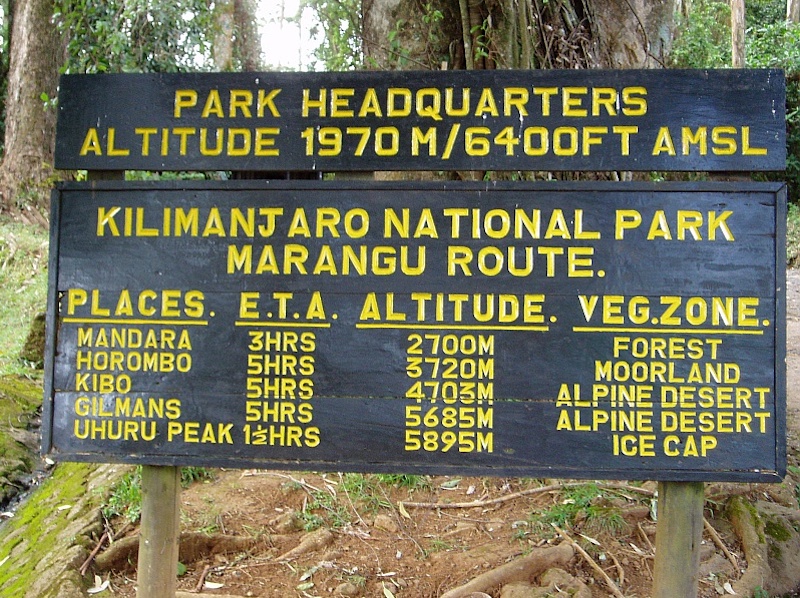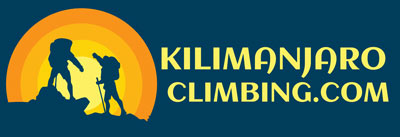Kilimanjaro National Park often abbreviate dto KINAPA, is located in Northern Tanzania, near the town of Moshi. The park comprises Mount Kilimanjaro; the highest mountain in Africa and it’s forests on the slopes. The park covers approximately 1,688 square kilometers of land, and it is located at least 300 Kilometers south of the Eaqutor. The largest tourist attraction in the National Park is Mount Kilimanjaro which is easily accessed by several routes. Kilimanjaro National Park is under the administration of TANAPA and is a great destination for many tourists who would wish to attempt the Kilimanjaro climb.
The entrance fees of Kilimanjaro National park depending on the category that one belongs to have been listed below;
| Children below 5 years old | 5 to 15 years old | 16 years and above | |
| Non residents | Free of Charge | USD 20 + 18% VAT | USD 70 + 18% VAT |
| Residents / Expatriates | Free of Charge | USD 10 + 18% VAT | USD 35 + 18% VAT |
| East African Citizens | Free of Charge | TSH 2,000 + 18% VAT | TSH 10,000+ 18% VAT |
Tourist attractions in Kilimanjaro National Park

The wildlife: the wildlife in Kilimanjaro National Park attracts a wide range of tourists including those that would wish to go birding and wildlife viewing. Wildlife that you should look out for includes black and white colobus monkeys, blue monkeys, leopards, cape buffalos, bushbucks, antelopes, elephants, and over 179 recorded bird species.
The peaks: The three peaks that are Kibo, Mawenzi, and Shira Peaks are top tourist attractions in the national park. Shira Peak is the oldest of all the Peaks that collapsed thousands of years ago forming the Shira plateau and is at an altitude of 3962 meters, Kibo Peak is the highest of the three at an altitude of 5895 meters and is snowcapped all year round irrelevant of the season and the Mawenzi Peak is the highest Peak on Mount Kilimanjaro with an altitude of 5145 meters.
Kifinika cultural site: this is a historical and important place for the Chagga people who used to perform rituals here. It is located along the Marangu route and a visit to the area will give you a chance to get to know more about the culture of the local Chagga people.
The zones along Mount Kilimanjaro: Mount Kilimanjaro has five climatic zones which include the rainforest zone, moorland zone, low alpine desert, high alpine desert, and arctic at the summit which has snow all year round. The zones keep changing with a rise in altitude with the National park located within the Montane Rainforest Zone.
The climate at Kilimanjaro National Park
Kilimanjaro National Park is at an altitude of 1700 and 5859 meters. The Kilimanjaro region experiences two seasons that is wet (March to May and late October to November) and it is during this time that Mount Kilimanjaro’s snow at the summit increases and the best time to go birding in the Park. The National Park receives an annual average rainfall of 828 and 2500 millimeters. The dry season is experienced from June to October and December to February characterized by clear days and cool nights.
Activities carried out in Kilimanjaro National Park
Mountain biking/cycling: The National Park has two cycling routes that tourists can use to explore and these are the Shira plateau and the Kilema route. The Shira Plateau is usually used by non-summit tourists and the Kilema is for visitors bound for the summit. Both routes have resting and picnic sites and not forgetting the beautiful scenery around.
Birding: Kilimanjaro National park has over 179 registered bird species including migratory and endemic bird species some of which include the African pygmy Kingfisher, White-necked Raven, African fish eagle, long-tail trogon, Grey hornbill, White checked barbet and blue napped mouse bird among others. Bird watching is best done during the wet Season-November to April when migratory birds are present.
Mountain climbing: You get to climb the highest mountain in Africa; Mount Kilimanjaro using the six different routes that lead to the summit. It will take you between 5 to 8 days or more depending on the route used with the main goal of climbing Mount Kilimanjaro and getting to the summit. The routes are a challenge with the change in zones with a reward from the beautiful scenery.
Game viewing: Mount Kilimanjaro National Park is home to hundreds of wildlife including different species including elephants, hyenas, giraffes, monkeys, antelopes, porcupines, black rhinos, baboons, honey badgers, leopards, antelopes, elands, bush babies, cape buffalos, aardvarks, bush babies, mongoose and servals among others. A large number of elephants can easily be seen in the Shira Plateau.
Paragliding: you can as well fly to the top of Mount Kilimanjaro where you will use carefully checked wingsuits or parachutes to participate in this activity. If you are scared of heights, then the best thing to do is to stay clear of paragliding although it is a good and exciting one to engage in.
Picnics: Kilimanjaro National Park has about 13 picnic sites that tourists can enjoy with a wonderful view of the surrounding areas. Some of the picnic sites to check out in the park include Wona, Machame half way, Daraja refu, Jiwe la mbula, Last water, and Kilimachele among others.
Accommodation in Kilimanjaro National Park
The accommodation in Kilimanjaro National park is categorized into two that is accommodation before and after climbing Mount Kilimanjaro and accommodation during the climb.
Accommodation before and after the climb: accommodation before and after the climb can be got in Moshi which is the main town in Kilimanjaro or you can drive 2 to 3 hours to Arusha where you will find more lodgings. The accommodation caters to all tourists including budget, mid-range, and luxury accommodation facilities.
Some of the lodgings we recommend include Kilemakyaro Mountain Lodge, Kimana Omega Safari lodge, Kilimanjaro View Lodge, Teule Guest House, and Dual Mountain View lodge among others.
Accommodation during the climb: when it comes to accommodation during the climb, it varies depending on the routes you are to use. Unless you are using the Marangu route that has huts for accommodation, you will have to use tents that are carried by porters. The Marangu huts offer the best accommodation to hikers who do not wish to use tents. The accommodation hut tents found along the Marangu route include the Mandara huts at an altitude of 2700 meters, the Horombo huts at an altitude of 3720 meters, and the Kibo hut at an altitude of 4700 meters.
How to get to Kilimanjaro National park
Kilimanjaro National Park is accessed by both flight and road transport and your budget dictates the best option you have to choose.
Flight: this is the fastest and most expensive way of getting to the National Park. Charter flights from Kilimanjaro International Airport and will take about 45 minutes to get to the western part of the ark.
Road: The different gates which include Umbwe, Lemosho, Mweka, Machame, Rongai, Kilema, and Londorossi can all be easily reached by road since they are located around the base of the National Park. The ascending gate at Marangu can be reached by road from either Kilimanjaro International Airport (86 km) or Moshi town (41 km).
Best time to visit Kilimanjaro National park
Kilimanjaro National Park is an all-year-round destination depending on the different activities you would wish to carry out however the best time is during the dry season (June to October) when the routes are clear and wildlife can easily be seen. But if you are traveling on a budget and would wish to avoid large crowds, the wet season is the best time.
The national park is located within an equatorial region which means that the rains are unpredictable and you might find that there are heavy rains during the dry season so you need to be ready for anything the abrupt weather changes. Note that the dry season has an influx of tourists causing the cost to hike which is not the case during the wet season.
